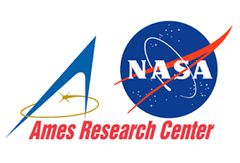Maine K-12 Space STEM Program Summary
- Introduction and Program Overview
- The Maine K-12 Space STEM Program is centred around the "NASA Satellite Chipset Computer Science Learning Module.” This update is to January 2024, and the program was designed to revolutionize STEM education in Maine schools.
- The program adhered strictly to its defined scope, as detailed in the supporting documentation (available on request), with no deviations and successful delivery within budget and timeline constraints.
- Educator Engagement and Training
- A cornerstone of the program is the deep level of educator engagement. Teachers are provided with in-depth training and continuous support, ensuring they are well-equipped to integrate the program’s curriculum into their classrooms.
- The training includes hands-on workshops, regular virtual sessions with subject matter experts, and access to a rich repository of resources on the Canvas LMS platform. This approach not only enhances the educators' teaching methodologies but also ensures a seamless and effective implementation of the program.
- Impact on Student Learning and Skill Development
- The program has significantly impacted student learning, evidenced by heightened interest in STEM subjects and improved performance in related areas. Students engage in hands-on experiments, from basic sensor-based activities to complex projects involving high-altitude balloons and satellite communications, fostering critical thinking and problem-solving skills.
- The practical nature of the program allows students to apply theoretical knowledge in real-world scenarios, preparing them for future academic pursuits and careers in STEM fields.
- Alignment with Educational Standards and Goals
- The Maine K-12 Space STEM Program is aligned with national and state educational standards, focusing on enhancing STEM literacy and fostering innovation among students. It supports the National Strategy for Mathematics, Science, and Technology Education, emphasizing sustainable practices and forward-thinking education.
- The program’s curriculum is designed to interlink with the United Nations Sustainable Development Goals, providing a global perspective on learning and emphasizing the role of STEM in addressing worldwide challenges.
- Networking and Collaborative Opportunities
- Through its association with entities like NASA and various space agencies, the program offers students and educators unique opportunities to engage with professionals in the field. This includes participation in global challenges, access to exclusive events, and the chance to present their projects at international conferences.
- The program fosters a robust community of practice among educators, facilitating the exchange of ideas and experiences and creating a network that enriches the teaching and learning experience.
- Conclusion
- The Maine K-12 Space STEM Program represents a significant advancement in STEM education, with its impact extending beyond the classroom to influence the broader educational landscape in Maine.
- Its success is rooted in the effective engagement of educators, the practical and innovative curriculum, and the myriad of opportunities it offers for student growth and professional development. The program not only educates but inspires, preparing a new generation of learners to meet the challenges of the future with knowledge, skills, and a global perspective.
Our Partners
Changing the world isn't easy, and we couldn't do it alone.
A core value of MaxIQ is to be able to provide our educational resources to students around the globe, especially those who live in areas where there is a lack of educational infrastructure to support these young minds in achieving their full potential. MaxIQ wouldn't be able to fulfil our mission without support from...
Subscribe to our emails
Subscribe to our mailing list for insider news, product launches, and more.




